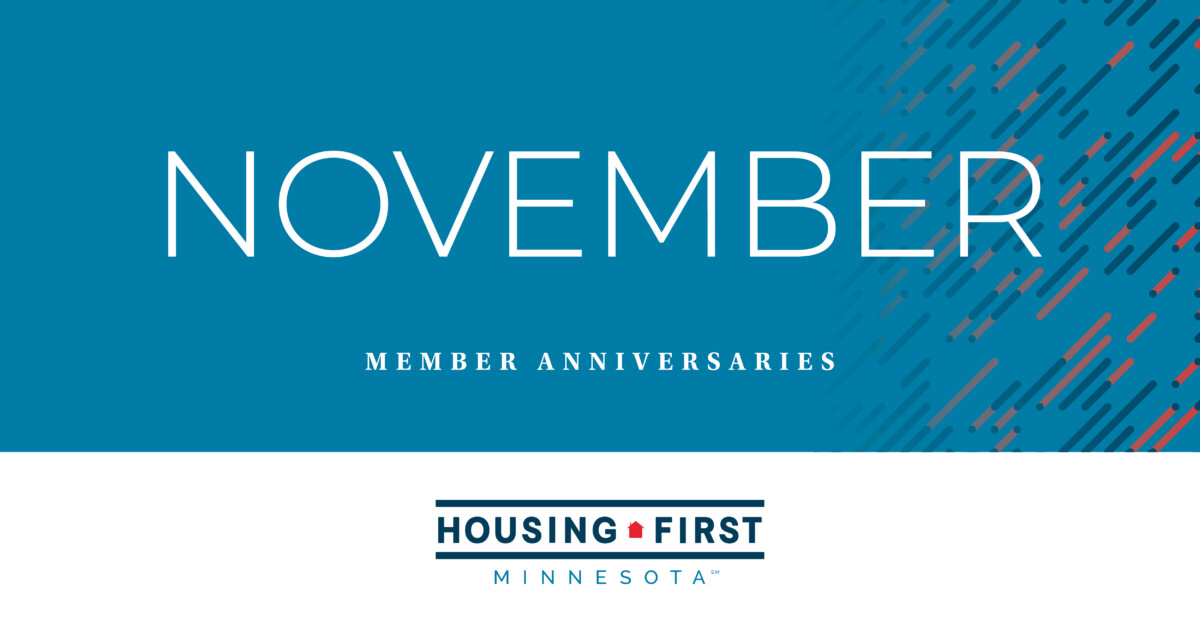Thrive 2040 Comment

Dear Chair Haigh,
I am submitting this letter on behalf of the Builders Association of the Twin Cities (BATC), in response to the Metropolitan Council’s (“Council”) release of the Thrive MSP 2040 framework document. By way of background, BATC represents nearly 1,100 member firms engaged in all phases of the home building, land development and remodeling industries in the Twin Cities area, including contractors, sub-contractors and suppliers. BATC is dedicated to providing a diverse selection of quality and affordably-priced homes in our region.
General Observations
BATC is encouraged by the general themes of stakeholder collaboration and data-driven accountability measures in Thrive. Emphasis of these themes creates an opportunity for the Council to utilize the perspectives of the region’s local governments and industry experts as Thrive is implemented. The Council’s commitment to monitor and evaluate the effectiveness of the policies and practices is important and should be carried throughout the life of this document.
BATC joins the Council in recognizing the importance of regional competitiveness and the strong link between growth opportunities, economic strength and prosperity. BATC believes meeting our market’s demand for housing by providing the largest array of housing choices at all price points across our region is a key factor in maintaining a competitive region.
In reviewing Thrive, BATC was pleased to see improvements in the distribution of population which better reflects our region’s likely pattern of growth. However, the prediction of a denser, transit-oriented growth pattern is not shared by BATC. Based on long experience, we see nuanced changes to the well-established market pattern, which will include some transit-oriented and dense-growth opportunities. BATC strongly believes these opportunities will be more modest than substantial, given our market’s current land availability, the prohibitive costs of redevelopment, market preference, and the substantial limitations on access to and use of transit in our market.
Thrive is presented as a value-based document that attempts to synthesize a shared vision for our region. BATC agrees with many elements of the shared vision, but recognizes that as the Council increasingly reaches beyond its statutorily authorized core functions, maintaining that vision becomes much more difficult. Thrive is long on ideas, but in many areas, short on specifics which are necessary for a full public discussion on policy, planning and regional growth. We question the need for and appropriateness of the Council’s effort to insert itself into policy areas that are outside of its identified mission. For Thrive to ultimately succeed the Council must engage stakeholders consistently, utilize data-driven approaches, and adhere to the core functions of the Council.
Housing
BATC joins the Council in supporting a housing market that meets the diverse and wide ranging needs across our region. Despite our consistent message to the Council regarding the growing regulatory crisis, Thrive has focused almost solely on subsidized affordable housing policies. There is undoubtedly a need for subsidized housing and BATC encourages the Council to equip local governments with the tools to address this need. But there is a broader housing affordability issue which affects all residents of our region and could impede regional vitality and growth.
BATC’s vision of creating a more efficient housing regulatory structure advances the goals of housing affordability for our entire region. This approach maximizes housing access and enhances the competitiveness of our region. The need for this approach across our region is growing and we ask the Council to join us in this effort.
Minnesota has the highest housing regulatory burden in the Midwest and is among the highest in the United States, according to the Housing Supply Regulation Index. Twenty-five to thirty percent (25-30%) of the final price point of a home is attributable to regulatory costs. These range from environmental regulations during the earliest phases of development, to the building code requirements in place during construction, to the fees and taxes due at the time of closing.
Of greatest concern to BATC is that the momentum is heading the wrong way. Instead of decreasing regulations, the homebuilding industry is consistently addressing new regulations that add thousands of dollars to the final price point of a home. This is not sustainable and is a direct threat to our shared goal of housing affordability for all Minnesotans.
Items like duplicative or unreasonable fees required by local governments, or the current proposal to mandate indoor sprinkler systems in single family homes are examples of issues where the Council could use its influence as a housing advocate to elevate these affordability discussions. BATC recognizes that these are difficult discussions between government entities, but if housing affordability is a regional priority then this is where the emphasis ought to begin. Thrive is silent on these issues, which is a missed opportunity for our region and a weakness of the document.
Redevelopment
The Council’s emphasis on in-fill and TOD opportunities will require a substantial increase in redevelopment for our region. On page 18 the Council acknowledges a primary barrier, “Infill development and redevelopment require less new regional infrastructure but can cost more for the developer up front.” The cost to the developer is always built into the project costs and is passed onto the homebuyer, but it also represents a significant risk factor and barrier to financing, as many costs associated with redevelopment do not add to the appraised value of the home. Cost is a primary factor in a homeowner’s choice when building a new home and cost will be a steep challenge for pursuing all redevelopment projects.
Thrive places a priority on streamlining the redevelopment process. BATC is interested in details on how the Council proposes to achieve this. Local governments control the entitlement process which is substantially more cumbersome, time-consuming and politically charged in redevelopment scenarios. Resource efficiencies from redevelopment are an admirable goal, but pinning a substantial portion of our region’s long-term growth on the speculation that redevelopment will shoulder a sizeable increase of the region’s growth is not realistic.
Land Use
BATC has long supported the Council’s mission of ensuring orderly and economical land development. Thrive states that the Council will create higher expectations for land use by directing growth where infrastructure already exists. This approach is reasonable and efficient, provided the market demand exists for growth in these areas. However, creating infrastructure investments where market demand does exist for growth is also an important priority that is not adequately addressed in Thrive. In fact, there are contradictions in approach throughout its land use planning objectives.
On page 13 it states, “The Council will use its authority and capacity to plan and invest in community development and consider prosperity and economic competitiveness as a lens through which to evaluate its planning, operations and investment decisions.” BATC concurs with this approach but finds it contrary to others, including limiting changes to MUSA, which the Council states is adequate through 2040. BATC strongly believes that flexibility is required in this critical area to respond to market conditions, which may very well challenge the MUSA assumptions of today in the coming years.
On page 14 it states, “Advancing regional balance will be a consideration that helps all parts of the region receive investments that promote prosperity at their stage and level of development.” Again, BATC supports this statement but it is at odds with the umbrella statements directing growth where infrastructure already exists and limiting any MUSA expansion. BATC strongly believes that we need all types of housing for the variety of preferences in our markets, which span across all of the Council’s regional designations. The Council’s statutory jurisdiction as a planning agency does not extend to making decisions about market allocation or market choices. Failure to make balanced and timely growth investments will result in leapfrog development and further threaten housing affordability.
In Thrive, the Council states that the region is able to provide cost-effective infrastructure when it is able to anticipate where, when, and to what extent regional growth can occur. This issue was at the heart of BATC’s concern and opposition to the preliminary population forecasts published by the Council in late 2013. While the updated forecasts are greatly improved and now better reflect our region’s growth pattern, the wide-ranging results from the Council’s modeling casts doubt about the effectiveness of the Council’s ability to anticipate where, when, and to what extent growth is likely to occur. BATC believes that our historical growth pattern and analysis of land availability give us the best indicators for growth patterns for the foreseeable future. Thrive should be further amended to better reflect this growth pattern which is shaped by land availability, affordability, access to transportation, strong schools, natural amenities, cultural attractions and safety.
In Thrive, each city is captured into one of ten land use designations. While the designations are a reasonable starting point for regional land use discussions, the accompanying average density minimums has increased for many cities. BATC believes that the densities proposed will create challenges for many cities by forcing higher density, multi-family projects that will face market acceptance challenges, neighborhood resistance, and feasibility barriers for developers. This, too, will result in leapfrog development to cities with less proscriptive growth requirements.
The attached exhibits were prepared to demonstrate what a typical residential block would look like using the proposed density described in Thrive. The exhibits compared an urban block with a similar size block from a suburban neighborhood. Both exhibits consist of approximately 10 acres of single family homes served by a local street that met city standards. The comparison exhibits demonstrate that an existing urban block consisting of 56, 6,000 Sq ft (42×128) would need to double in density to meet the proposed 10 unit per acre criteria for urban development. Also, a suburban neighborhood, consisting of 26, 10,000 Sq ft lots (80×200) would also need to double the number of lots to meet the proposed density of 5 units per acre. Simply stated, the proposed policies would require Minneapolis neighborhoods in suburban cities and suburban neighborhoods in suburban edge cities.
The exhibits provide a simple example of the impact of the proposed policies within our communities. What they are unable illustrate is that our region is not made up of square, pad-ready blocks, nor do they show the impacts of environmental constraints, local ordinances and the many encumbrances that are part of any development. Enforcing these densities in real world environments will drastically change the existing built landscape of our cities and the ability for homebuilders to meet the housing demands of those cities and the market.
Transportation/Transit
Thrive describes many highway-specific policies that will guide the Transportation Policy Plan. This emphasis is important given that nearly 85% of our residents use this infrastructure by automobile. What’s missing in the document is any mention of expansion possibilities. The outsized emphasis on transit opportunities understates the need for consideration of broader transportation infrastructure investments and, at a minimum, transportation planning flexibility looking toward 2040. Our region requires substantial resources to meet future demand for transportation infrastructure. The Council’s focus should be on more flexible and market-responsive solutions versus its attempt to drive the market toward transit and TOD opportunities. Frankly, our geographic diversity and lack of transit options are significant impediments.
On page 27, emphasis is given toward the adoption of Complete Streets solutions. BATC supports Complete Streets consideration for certain corridors, but believes their use is limited and should not be positioned as a one-size fits all approach in all transportation planning.
Thrive states that light rail, commuter rail and bus rapid transit lines are changing the landscape by attracting new real estate development and creating more choices for how people move about the region. BATC strongly supports the implementation of transit systems wherever ridership exists to support it. However, the fact remains that the means of travel within our region will remain, for some time to come, the automobile. Projected growth along transit corridors has supported only incremental housing growth, as demonstrated by growth patterns along the Hiawatha Line and other major transit corridors. There are indications that the planned Southwest LRT Line will attract greater development interest, but this project is unique given the features of the corridor. Even in the most optimistic TOD scenario, the regional usage of transit systems will continue to be a small fraction of the overall travel choice of our region’s residents. As the Council reported in its most recent Travel Behavior Inventory, transit use makes up just 3% of the travel for our residents, while 84% of the trips are made by automobile. While it’s likely that these numbers will marginally adjust over time, there is a disconnect between the Council’s promotion of TOD and the market’s interest and acceptance of it as a viable option for a substantial segment of our marketplace.
Water
BATC joins the Council in placing water sustainability as a growing priority. In Thrive the Council states a goal of incorporation of “water sustainability considerations in all areas of policy and actions, including overall development patterns, water management, transportation, and housing and regional parks.” This statement is extremely broad and proposes a host of possible regulatory scenarios, many of which will be problematic from a cost, implementation, and property rights standpoint. Greater specificity is needed on what specific, collaborative steps are necessary to address our emerging water sustainability issues. On page 3 of Thrive, emphasis is placed on actively promoting infiltration. BATC has been at the forefront of exploring low-impact development techniques to find the appropriate balance of resource protection and affordability. We believe the Council must proceed with caution in terms of promoting a specific management practice like infiltration, which has been in use by developers for less than a decade. Some areas of the region allow for infiltration techniques but many areas do not, due to soil types. BATC urges flexibility and more time to better assess the effectiveness and cost impacts of infiltration and other stormwater management practices prior to any requirement for their use on a regional basis.
Conclusion
Thrive is an ambitious and forward-looking effort. BATC recognizes the Council and staff for their work in staking out a vision for a vibrant region. BATC shares the priorities of regional competitiveness, housing affordability, efficient land use planning, resource efficiency, collaboration and inclusiveness.
Much of Thrive is devoted to broad policy statements that aren’t connected with detail which would provide a clear and transparent direction on how policies will impact planning and growth, and whether or not the Council has the authority to regulate in a given issue area. BATC believes strongly that the Council’s adherence to its core missions is critical to our region’s success. There also needs to be clear accountability between the Council and cities in the region for ensuring that established policies achieve goals of housing affordability and accessibility. We strongly recommend that Thrive be amended to include greater detail, including statutory authority and directive, wherever possible.
BATC is concerned that Thrive falls short in key areas, including the critical areas of land use and housing affordability. At the heart of our concern is an on-going disagreement about the levels of density, redevelopment, and TOD that can be reasonably expected in our market over the next 25 years. We feel strongly that overstating this demand and directing resources toward it will ultimately result in stranded investment and leap-frog development. That is an unacceptable outcome for our region. We challenge the Council to continue to work with BATC and other stakeholders to improve our understanding of our region’s market and development of a regulatory structure to meet the region’s goals.
Sincerely,
Shawn Nelson
2014 President

















